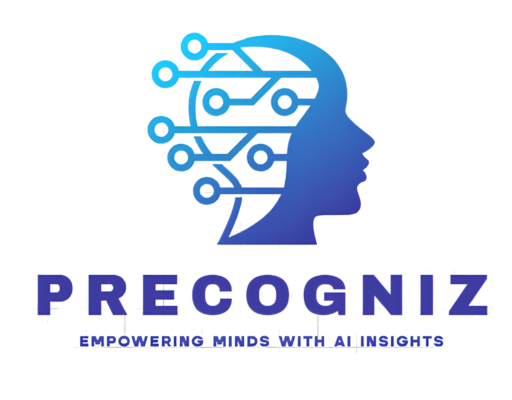AI in Automotive Industry
Revolutionizing the future of mobility with Artificial Intelligence
🚗 Autonomous Driving
AI powers self-driving cars with advanced computer vision, LiDAR fusion, and real-time decision-making algorithms for safe navigation.
🧠 Predictive Maintenance
Machine learning models analyze IoT sensor data to predict component failures before they happen, reducing downtime and costs.
📡 Connected Cars
AI integrates with 5G to enable V2X (Vehicle-to-Everything) communication, enhancing traffic safety, route optimization, and infotainment.
⚡ Smart Manufacturing
AI-driven robotics and quality control optimize automotive production, reducing defects and increasing efficiency.
🛡️ Driver Assistance
AI enables ADAS features like lane-keeping assist, adaptive cruise control, emergency braking, and drowsiness detection.
🌍 Sustainability
AI helps in energy management for EVs, smart charging, and eco-driving algorithms to reduce carbon footprint.
The AI Revolution in Automotive
Artificial Intelligence is not just an upgrade; it's redefining the very concept of driving, safety, and the in-car experience. Explore the cutting-edge technologies shaping our journey into the future.

Core AI Technologies
Autonomous Driving
The pinnacle of automotive AI. Sensor fusion combines data from LiDAR, radar, cameras, and IMUs. Deep learning neural networks perform real-time path planning, object detection, and behavioral prediction, all cross-referenced with HD maps to navigate safely.
Predictive Maintenance
AI creates a 'digital twin' of the vehicle, analyzing component data to predict the Remaining Useful Life (RUL) of parts. This allows for just-in-time service, reducing costs and preventing unexpected breakdowns.
In-Cabin Experience
AI-powered biometrics recognize the driver's face to load personal settings. Augmented Reality Head-Up Displays (AR-HUDs) overlay navigation onto the real world, while AI monitors driver drowsiness and distraction levels.
The 6 Levels of Driving Automation (SAE)
Level 0-2: Driver Support
Level 0: No automation. Level 1: A single function like cruise control. Level 2: Advanced Driver Assistance Systems (ADAS) like lane-centering and adaptive cruise control can work together. The driver must always supervise.
Level 3: Conditional Automation
The car can manage most aspects of driving in specific conditions (e.g., highway traffic), but the human driver must be ready to take back control at any time when requested by the system. This is a key transition point.
Level 4-5: High & Full Automation
Level 4: The vehicle can operate fully by itself within a geofenced area or specific conditions, with no human intervention needed. Level 5: True "driverless" capability. The car can operate on any road, anywhere, under any conditions.
Expanded AI Applications
Smart Manufacturing
AI optimizes energy consumption in factories and directs "cobots" (collaborative robots) to work safely alongside humans. AI vision systems detect microscopic flaws in parts, ensuring unparalleled quality control.
Connected Ecosystem (V2X)
Vehicle-to-Infrastructure (V2I) allows cars to talk to traffic lights for optimized flow, while Vehicle-to-Pedestrian (V2P) can warn drivers of unseen pedestrians. AI manages this vast data network to create smarter cities.
Generative AI in R&D
Generative AI runs millions of aerodynamic simulations to optimize vehicle design for efficiency. It also creates synthetic training data for autonomous systems, covering rare edge cases that are difficult to test in the real world.
EV Battery Management
AI manages 'smart charging' to draw power when grid demand is low. It enables Vehicle-to-Grid (V2G) tech, allowing EVs to sell power back to the grid during peak times, turning the car into a mobile energy asset.
Usage-Based Insurance
AI analyzes telematics data to create a granular risk profile, identifying safe driving habits. It can also reconstruct accidents from sensor data, streamlining the claims process and reducing fraud.
AI-Driven Cybersecurity
AI provides real-time intrusion detection by monitoring the car's internal CAN bus for anomalous signals. It protects against threats to critical systems and ensures the security of over-the-air (OTA) software updates.
Innovators Shaping the Future
Waymo (Google)
Pioneer in self-driving tech and ride-hailing services.
Tesla
Leader in ADAS with Autopilot and vision-based FSD.
NVIDIA
Provides high-performance AI chips (DRIVE platform).
Mobileye (Intel)
Leading supplier of camera-based ADAS technology.
The Road Ahead: Challenges & Ethics
The path to full autonomy involves overcoming significant hurdles: ensuring AI safety and reliability, navigating complex global regulations, addressing data privacy concerns, and securing public trust. The industry's brightest minds are tackling ethical dilemmas like the 'trolley problem' to unlock a future of mobility that is safer, cleaner, and more accessible for everyone.
